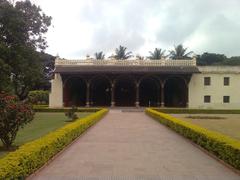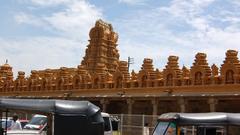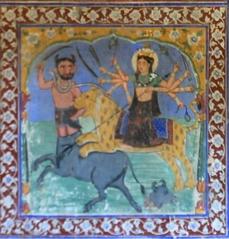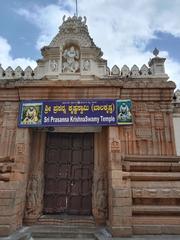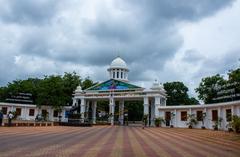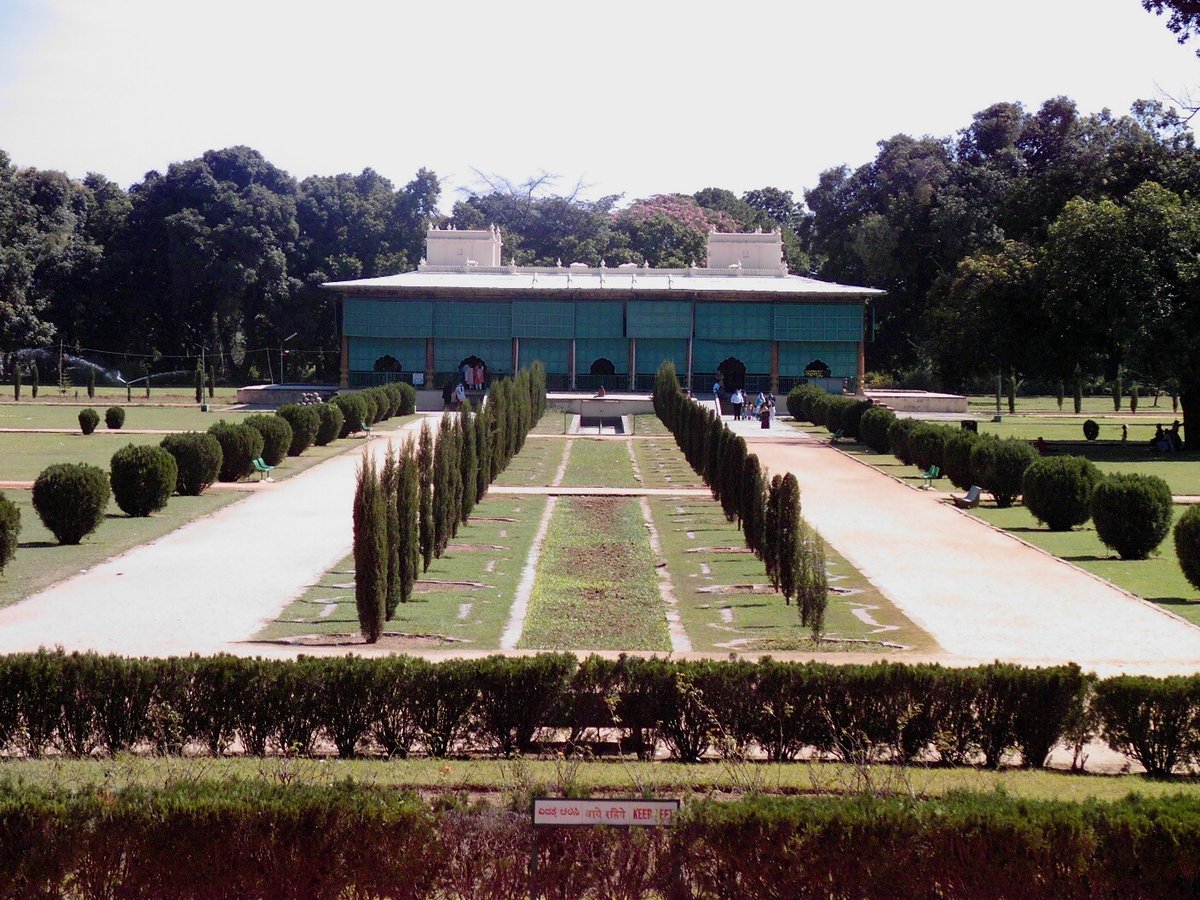
Comprehensive Guide to Visiting Daria Daulat Bagh Museum, Mysore, India: History, Significance, and Visitor Tips
Date: 17/07/2024
Introduction
Daria Daulat Bagh Museum in Mysore, India, is a historical gem that offers visitors an immersive experience into the life and times of Tipu Sultan, the famed ‘Tiger of Mysore.’ Built in 1784, this magnificent palace served as Tipu Sultan’s summer retreat and showcases the rich cultural confluence of the era through its Indo-Saracenic architecture. Primarily constructed from teakwood, the palace stands as a testament to the artisans’ craftsmanship with intricate carvings, vibrant murals, and expansive gardens (Visiting Daria Daulat Bagh). Today, it functions as a museum under the Archaeological Survey of India, housing an impressive collection of artifacts, including Tipu Sultan’s personal belongings, military weaponry, and historical documents, providing a glimpse into the opulence and strategic brilliance of his reign (Exploring the Daria Daulat Bagh Museum). This guide aims to offer a comprehensive overview of Daria Daulat Bagh’s architecture, historical significance, and practical visitor information, ensuring a memorable and insightful visit for all.
Table of Contents
- Introduction
- Architectural Splendor of Daria Daulat Bagh
- Historical Significance of Daria Daulat Bagh
- Visitor Information
- Conclusion
- References
Architectural Splendor of Daria Daulat Bagh
A Symphony of Wood and Gardens
Daria Daulat Bagh is primarily constructed from teakwood, lending the palace an air of lightness and elegance. It rests atop a raised platform, adding to its grandeur. Intricate carvings adorn the wooden pillars, eaves, and balconies, showcasing the artisans’ skill. Floral motifs, geometric patterns, and depictions of animals and birds create a visual feast for visitors.
The palace features open corridors and large balconies designed for maximum air circulation, crucial in Mysore’s tropical climate. These spaces offer breathtaking views of the surrounding gardens, originally designed in the Mughal style with terraced lawns, fountains, and water channels.
A Kaleidoscope of Colors and Paintings
The vibrant use of colors enhances Daria Daulat Bagh’s visual appeal. The wooden framework is painted in green, white, and ochre, creating a striking contrast against the lush greenery of the gardens. The interior walls are adorned with murals depicting scenes from Tipu Sultan’s court, battle victories, and social life of the period.
Key Architectural Features
- The Summer Palace: The main building of the complex, the Summer Palace, is a rectangular structure with a central hall surrounded by a series of rooms. The double-domed structure, a distinct feature of Indo-Saracenic architecture, adds to the palace’s visual appeal.
- Galleries and Balconies: The palace features extensive open corridors and balconies, providing ample space for relaxation and enjoying the surrounding views. These spaces are supported by intricately carved wooden pillars, showcasing the craftsmanship of the era.
- The Painted Walls: The interior walls of the palace are adorned with murals depicting scenes from Tipu Sultan’s life, battles, and courtly life. These paintings, though faded, offer valuable insights into the history and culture of his reign.
- The Gardens: While not in their original Mughal glory, the gardens surrounding the palace still offer a serene escape. The presence of numerous trees provides ample shade, making it a pleasant place to stroll even during the hotter months.
Historical Significance of Daria Daulat Bagh
A Symbol of Power and Resistance
The palace served as Tipu Sultan’s summer capital and a strategic location during his wars against the British East India Company. From here, he planned his campaigns and held court, making it a center of power and resistance against British colonialism. The murals inside the palace depict scenes from his victories, showcasing his military prowess and the valor of his soldiers.
A Window into Tipu Sultan’s Reign
The palace provides valuable insights into the cultural and social milieu of Tipu Sultan’s court. The murals depict not just battle scenes but also courtly life, hunting expeditions, and religious processions. They showcase the costumes, customs, and social hierarchy of the time, offering a rare glimpse into a bygone era.
Transformation into a Museum
After Tipu Sultan’s death in 1799 during the Siege of Seringapatam, Daria Daulat Bagh fell into the hands of the British. Recognizing its historical significance, the Archaeological Survey of India took over the palace in the 20th century and converted it into a museum.
The Museum Collection
Today, Daria Daulat Bagh Museum houses a fascinating collection of artifacts related to Tipu Sultan and his reign. Some of the key exhibits include:
- Weapons and Armor: The museum showcases a collection of swords, daggers, muskets, cannons, and other weapons used by Tipu Sultan’s army. These artifacts highlight the advanced military technology employed by his forces.
- Paintings and Manuscripts: The museum houses a collection of original paintings, manuscripts, and documents from Tipu Sultan’s era. These artifacts provide valuable insights into the administrative, cultural, and social aspects of his reign.
- Personal Belongings: The museum also displays some of Tipu Sultan’s personal belongings, including his clothes, coins, and furniture. These items offer a more intimate glimpse into the life of the “Tiger of Mysore.”
Visitor Information
Ticket Prices and Visiting Hours
To visit Daria Daulat Bagh, tickets can be purchased at the entrance. The ticket prices are as follows:
- Adults: INR 20 for Indian citizens, INR 200 for foreign nationals
- Children (up to 15 years): Free
The visiting hours are from 10:00 AM to 5:00 PM, with the palace being closed on Fridays and national holidays.
Travel Tips and Nearby Attractions
- Accessibility: The palace is wheelchair accessible, with ramps and accessible restrooms available.
- Best Time to Visit: The best time to visit is during the cooler months from October to March.
- Nearby Attractions: Consider visiting other historical sites in Mysore, such as Mysore Palace, Chamundi Hill, and the Brindavan Gardens.
Conclusion
Daria Daulat Bagh Museum stands as a remarkable monument to the legacy of Tipu Sultan, offering an unparalleled journey through the rich history and culture of 18th-century Mysore. Visitors are treated to an architectural masterpiece adorned with vibrant murals, intricate teakwood carvings, and lush Mughal-style gardens. The museum’s extensive collection of artifacts, ranging from Tipu Sultan’s personal belongings to advanced military weaponry, provides a nuanced understanding of his reign and the historical context of his time (Complete Guide to Visiting Daria Daulat Bagh Museum). Whether you’re exploring the detailed frescoes, admiring the bejeweled swords, or simply strolling through the serene gardens, Daria Daulat Bagh offers an enriching and educational experience. By following the visitor tips and practical information provided in this guide, you can make the most of your visit, ensuring a deeper appreciation of this iconic historical site. For more updates and travel tips, be sure to follow us on social media and visit our website regularly.
References
- Visiting Daria Daulat Bagh - Ticket Prices, Hours, and Historical Insights, 2024 asi.gov.in
- Exploring the Daria Daulat Bagh Museum - Visiting Hours, Tickets, and Key Highlights, 2024 asi.gov.in
- Complete Guide to Visiting Daria Daulat Bagh Museum in Mysore - Hours, Tickets, and Tips, 2024 asi.gov.in

